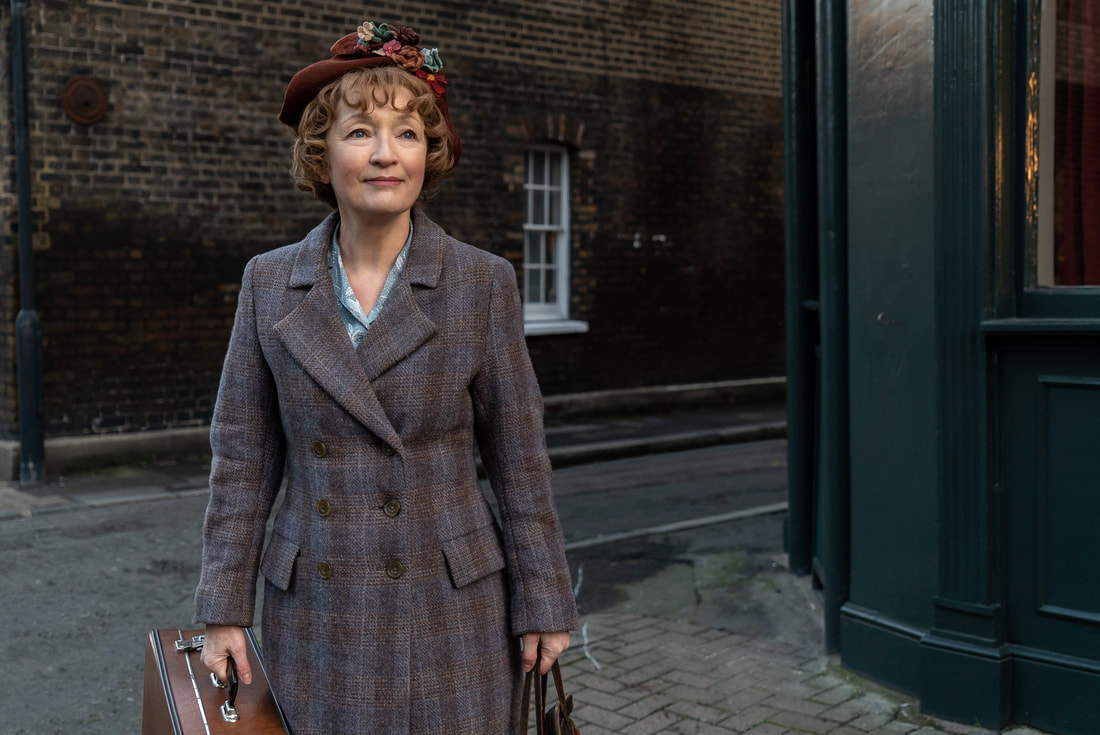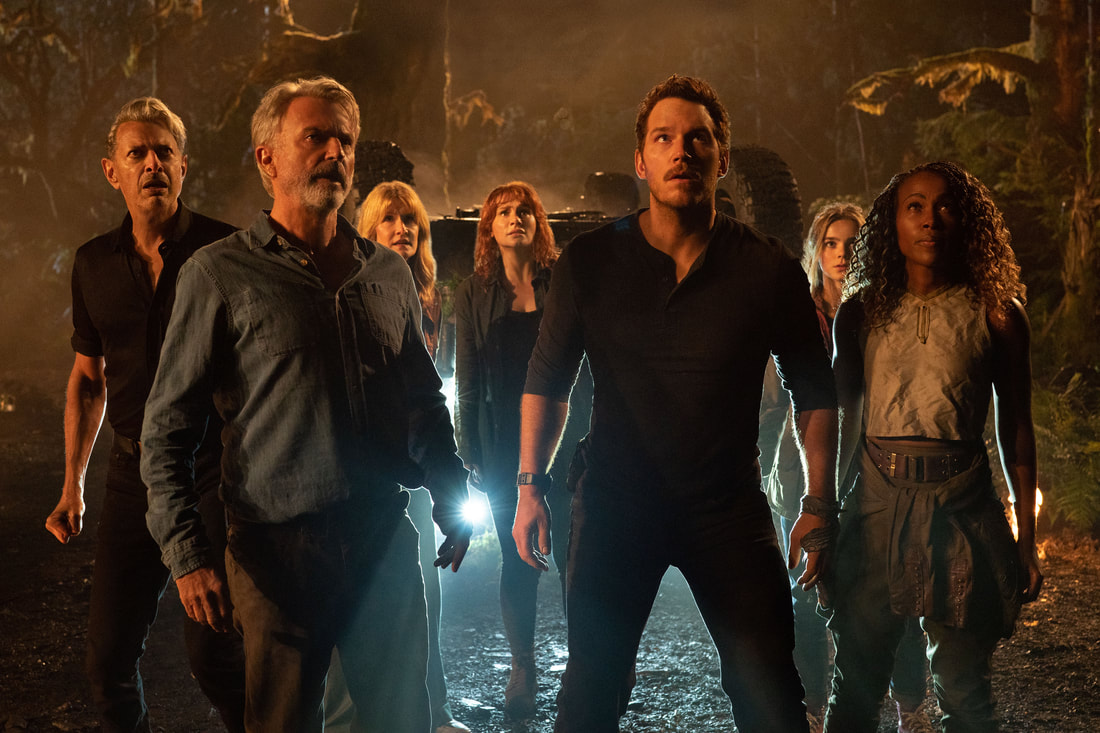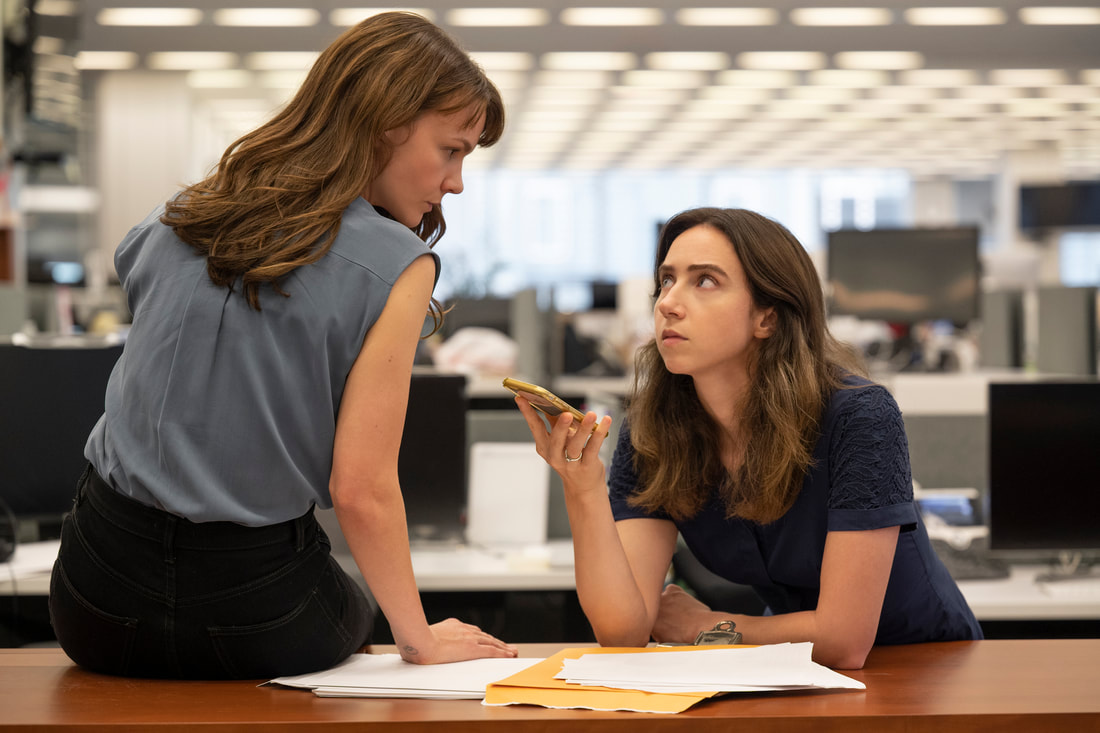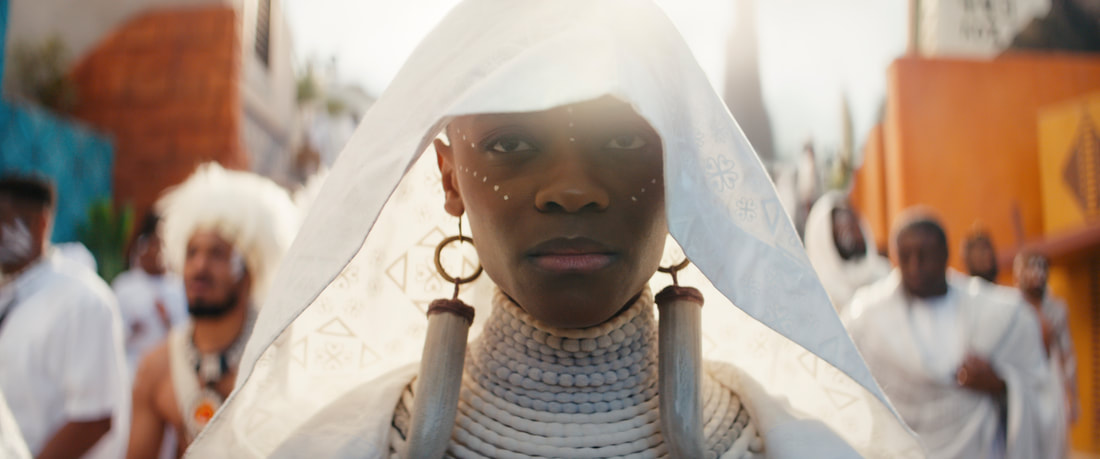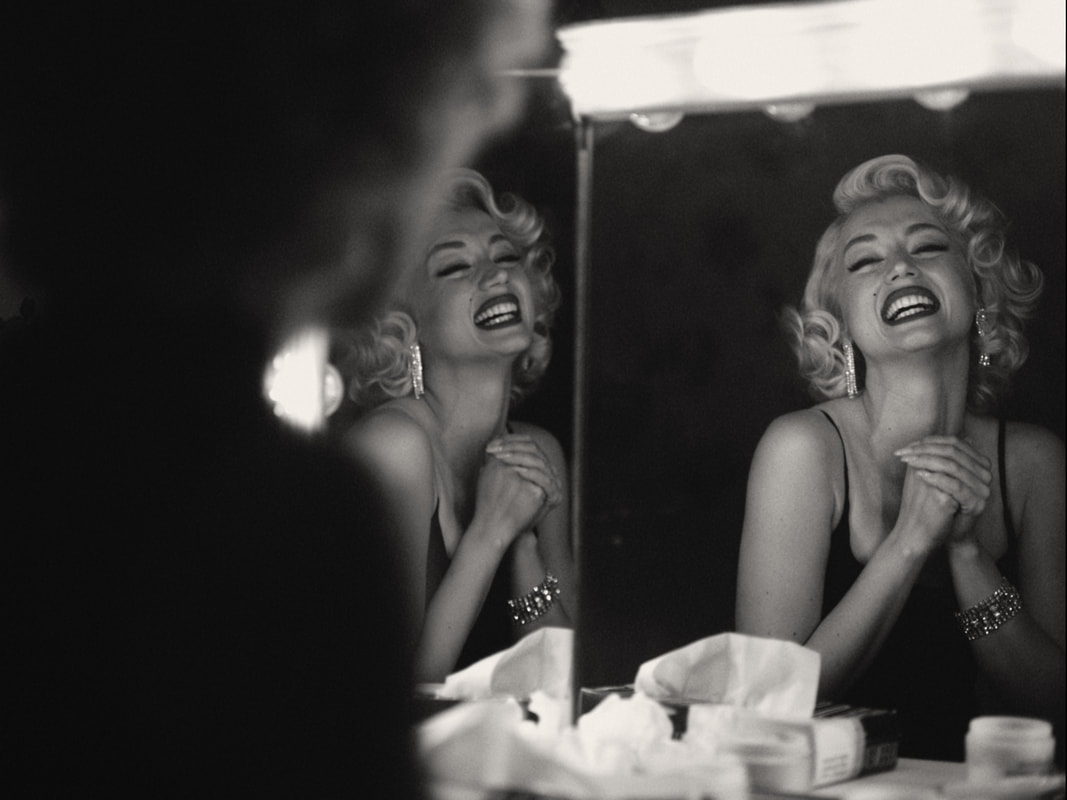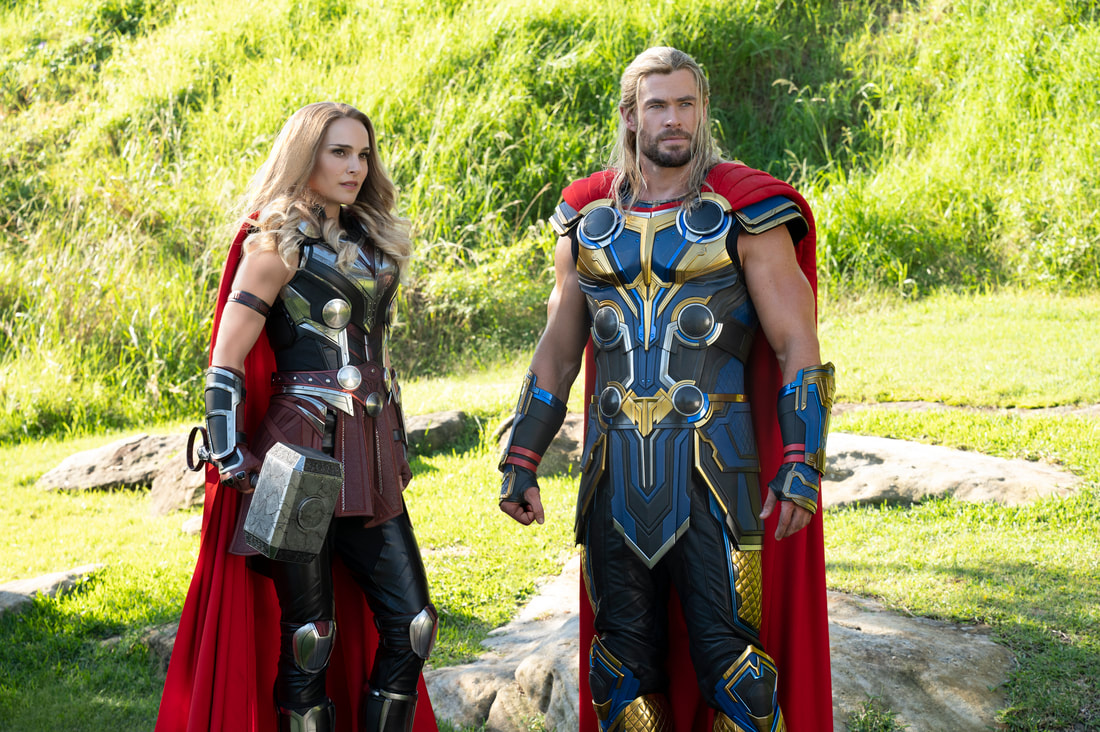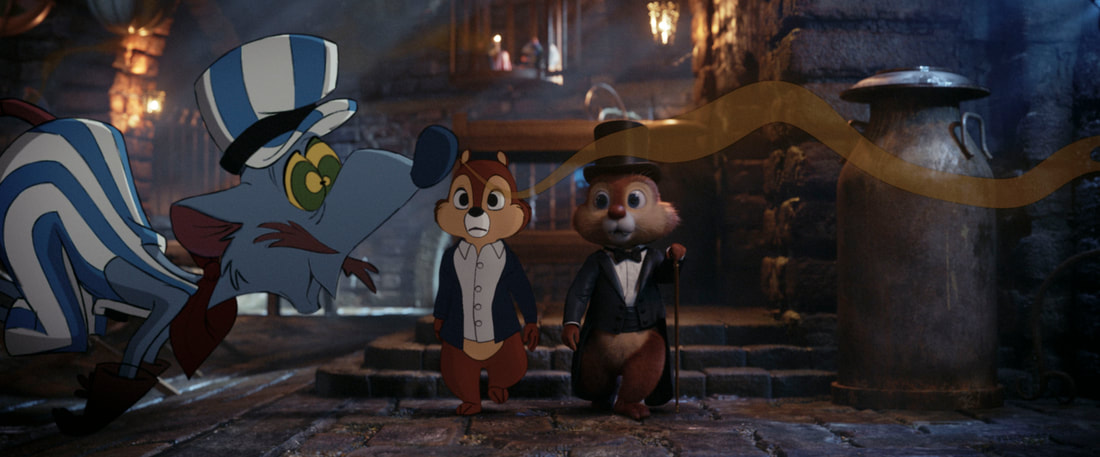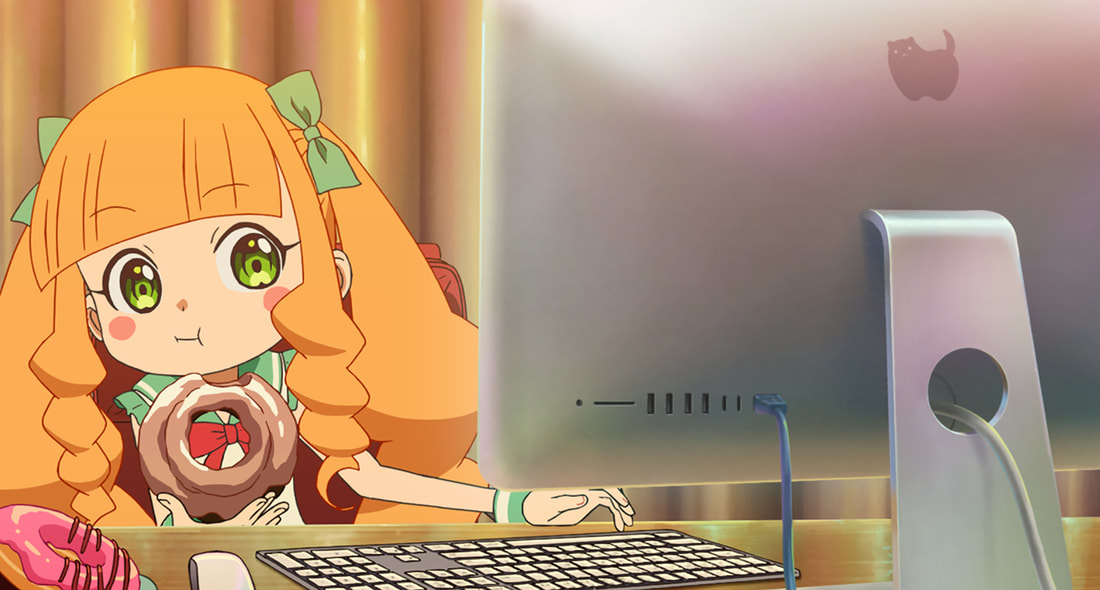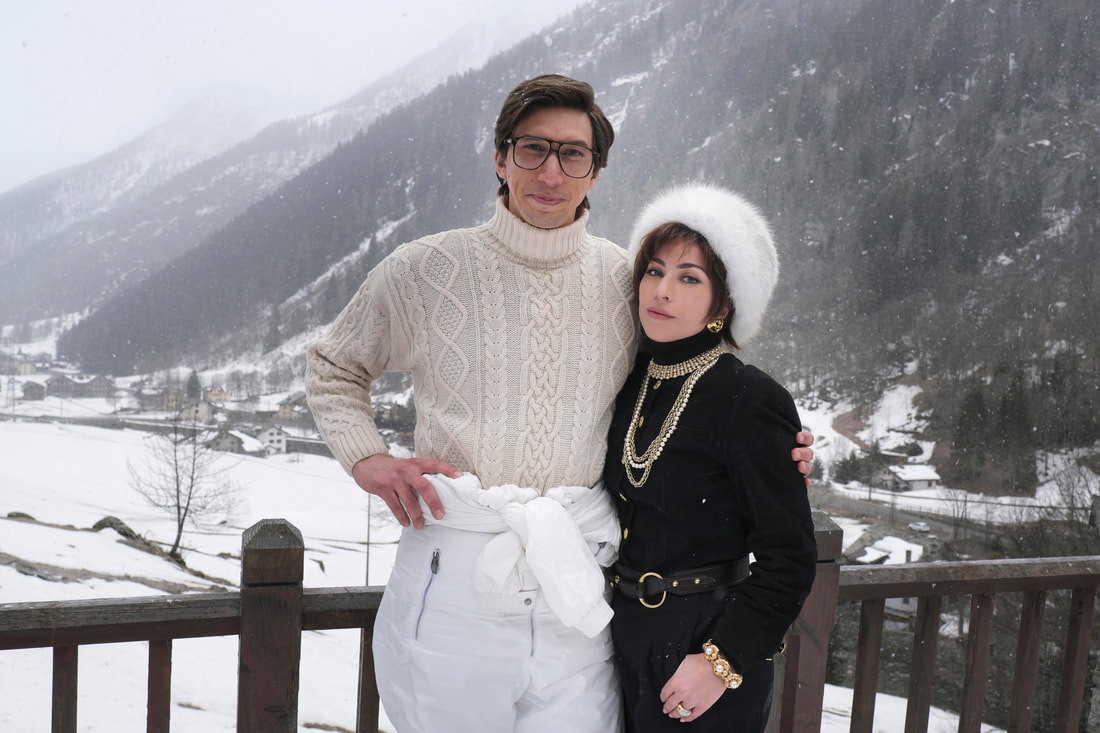|
Originally published on Elements of Madness.  L-R: Michelle McLeod stars as Mejal, Sheila McCarthy as Greta, Liv McNeil as Neitje, Jessie Buckley as Mariche, Claire Foy as Salome, Kate Hallett as Autje, Rooney Mara as Ona and Judith Ivey as Agata in director Sarah Polley’s film WOMEN TALKING. An Orion Pictures Release. Photo credit: Michael Gibson. © 2022 Orion Releasing LLC. All Rights Reserved. With an impressive cast, best-selling source material, two Oscar nominations, and one Oscar win, Women Talking has gotten a lot of buzz. Unlike some of this year’s other best picture nominees, Women Talking isn’t supposed to entertain crowds or draw hordes of movie fans to the box office. It’s supposed to make you think. Written and directed by Sarah Polley (Take This Waltz), the film is based on Miriam Toews’s novel of the same name which is inspired by events that occurred in an isolated Mennonite community in Bolivia. The novel explores what might have happened if women in the community had met in secret to decide what to do about ongoing sexual abuse. Together, they must figure out if they will leave, stay and fight, or do nothing. They carefully consider the pros and cons of each option, and they must ultimately choose between the familiarity and religious security of their community and the potential freedom they might experience in a world they know nothing about.
0 Comments
Originally published on Elements of Madness. There’s no right or wrong way to make a feel-good movie. But there are certain elements that will make one feel-good film much more successful and enjoyable than another. Feel-good films require precise storytelling techniques and a little extra wow-factor in order to make an impact. In the case of Mrs. Harris Goes to Paris, that wow factor is the contagious optimism that’s reflected in every shot. At first glance, the story of Mrs. Ada Harris, an English house cleaner in the 1950s who dreams of owning her own Dior gown, seems like a predictable and unrealistic feel-good tale. But under the direction of Anthony Fabian (Good Hope), and with captivating performances by Lesley Manville (Let Him Go), Isabelle Huppert (Elle), Jason Isaacs (Mass), Lambert Wilson (Benedetta), Alba Baptista (Warrior Nun), Roxane Duran (The Cursed), and Ellen Thomas (Arcane), Mrs. Harris Goes to Paris emerges as a lovely cinematic gem. The movie had a theatrical release earlier this summer and is now available on Blu-ray and DVD.
Originally published on Elements of Madness. In case you missed the theatrical release of Dominion, here’s a spoiler-free rundown: The movie picks up four years after the events of Fallen Kingdom. Isla Nublar, the site of both the original Jurassic Park and the new Jurassic World, has been destroyed. The genetically engineered dinosaurs have been set free to roam the Earth and walk among humans. While ordinary people are trying to figure out how to live their lives with dinosaurs walking around, others have jumped on the opportunity to turn a profit. A dinosaur black market has emerged, and Claire Dearing (Bryce Dallas Howard) and Owen Grady (Chris Pratt) are working to save as many dinos as possible from the criminal underworld. They’ve set up camp in a remote mountain cabin where they can protect Maisie Lockwood (Isabella Sermon), the first human clone, from the clutches of sinister scientists and money-hungry opportunists. Meanwhile, Lewis Dodgson (Campbell Scott) has begun collecting dinos to study at his biotech company, Biosyn. But that’s not all Biosyn is up to. Their latest attempts to disrupt the agricultural industry have attracted the attention of one Dr. Ellie Sattler (Laura Dern), who turns to her old pals Dr. Ian Malcolm (Jeff Goldblum) and Dr. Alan Grant (Sam Neill) for help. The paths of the original and new characters eventually collide, bringing everyone together for one last face-off against the ferocious and bloodthirsty dinosaurs.
“She Said” Forgoes Explicit Trauma and Emotional Manipulation in Order to Respect Survivors of Abuse11/17/2022 When a story about a crime or scandal breaks, you can bet that there’s a movie producer somewhere who’s already in negotiations over the rights to that story — and I can’t blame them. Humans are naturally curious, and there’s something inherently intriguing about the psychology of serial killers and the complex webs of events behind white-collar crimes. In October of 2017, when journalists Jodi Kantor and Megan Twohey published a story that exposed the crimes of Harvey Weinstein, producers Dede Gardner and Jeremy Kleiner had acquired rights to a movie version of the story within a few months. The hasty move seems, at first glance, exploitative and unethical. Why would anyone be in such a rush to make a movie about such a personal and traumatic topic? Can you make such a movie that doesn’t exploit the painful memories of the survivors? But after watching She Said, it’s clear that Gardner and Kleiner, along with director Maria Schrader and writer Rebecca Lenkiewicz, had one goal in mind: to give voice to the survivors in a truthful and respectful way. Weinstein, who is now behind bars, received more than enough attention both before and after the allegations broke. She Said works to shift the conversation about sexual abuse in Hollywood from the perpetrators to the survivors.
When you settle into your reclining theater seat with your favorite movie snacks to watch the anticipated Black Panther: Wakanda Forever (preferably in an IMAX theater, which is definitely worth the extra dollars), you can expect a strong story brought to life by a dedicated cast. While the movie honors the late Chadwick Boseman and the character he brought to the screen in the first Black Panther movie (2018), Wakanda Forever isn’t stuck in the past. Nor is it a sluggish transitional sequel, as the second installments in film franchises often are. It’s an exciting, emotionally gripping, aurally immersive, and visually impressive Marvel movie that is, on every level, a modern-day epic. It follows the stylistic and aesthetic patterns set by its predecessor, keeping director Ryan Coogler’s vision for Wakanda alive. It also introduces a few new characters to the Marvel Cinematic Universe, including Namor (Tenoch Huerta Mejía), the ruler of a stunning underwater kingdom. But the glue that holds the colorful costumes, otherworldly sets, and epic fight scenes together is Shuri (Letitia Wright), princess of Wakanda and sister to the late King T’Challa. Her story and development are what make Wakanda Forever, the second longest movie in the MCU, worth every minute.
Content / trigger warning: Blonde contains flashing and strobing effect imagery that may be triggering to those with photosensitivity. Blonde is rated NC-17 for some sexual content. It contains frightening and intense images involving abuse, assault, and abortion. These topics are briefly discussed in the review below. Blonde isn’t the feel-good biopic you’re looking for. Nor is it a sentimental tear-jerker. Andrew Dominik’s 2-hour and 46-minute adaptation of the Joyce Carol Oates novel is difficult, depressing, and demanding. It’s the kind of movie that made me tell my parents, “Don’t watch it, you won’t like it” (although the MPAA rating alone would have been enough to turn them away). But as I watched, I also felt that I, as a critic, wasn’t supposed to like it. With so many unconventional stylistic elements at play and so much controversial content, I felt like the only “correct” review I could give would be to call the movie problematic and pretentious. However, that review wouldn’t be genuine. There are certain shots, sequences, scenes, and techniques in Blonde that really don’t work — and yet, I found myself completely engaged with the film, not wanting it to end. It wasn’t until the JFK blowjob scene when a male critic in the audience burst out laughing (to my extreme annoyance, as I was sympathizing with Marilyn’s perspective and admiring what the scene had to say about sexual power dynamics) that I figured out what Blonde was doing right. It was making me aware of myself as a woman, as a critic, as a movie lover, and as a human. Blonde gave me one of the most powerful and visceral experiences I’ve had at the movies in a long time. For that reason, I don’t want to focus on all the little things that didn’t work. Instead, I want to focus on a few big things that it got right. After all, any movie that makes you more aware of yourself has to be doing something right.
Taika Waititi’s Thor: Love and Thunder is far removed from Kenneth Branagh’s Shakespearian take on the comic book series in Thor (2011). The fourth Thor film in the MCU is even more wacky and bizarre than Thor: Ragnarok (2017), which was also directed by Waititi. Perhaps the difference is that this time, Waititi was also responsible for the story and co-wrote the script with Jennifer Kaytin Robinson. The good news is, Thor: Love and Thunder features the same cast and characters we’ve come to know and love over the last decade. Throughout the three directorial changes of the Thor films and the many stylistic shifts of the other MCU films featuring Thor, Chris Hemsworth (Thor) and Natalie Portman (Jane Foster) have remained consistent in their performances, developing characters that can stand the test of time. The question is, can those characters withstand yet another attack on the universe by a new, menacing villain? In Love and Thunder, Thor’s strength is tested once again as he faces Gorr the God Butcher (Christian Bale), a dark and devilish figure who’s hellbent on destroying all gods. King Valkyrie (Tessa Thompson) and Korg (voiced by Waititi) are there to help, but Thor is at a disadvantage because he can’t bring his trusty hammer, Mjolnir, into battle. This time, the legendary weapon has decided to lend its powers to a new warrior: Mighty Thor, aka, Dr. Jane Foster.
In 1943, Disney introduced the world to a pair of chipmunks, Chip and Dale, in the cartoon short, “Private Pluto.” The delightful duo made appearances in a number of other shorts over the years, and in 1988 they finally landed their own show. But what happened to Chip and Dale after that show ended in 1990? After three decades out of the spotlight, the classic cartoon characters have returned in an all-new movie, Chip ‘n Dale: Rescue Rangers. Even though the new film seeks to introduce the beloved characters to a new generation, it’s just as much for the parents in the audience as it is for the kids. Chip ‘n Dale: Rescue Rangers is a hilarious feature-length running joke about the evolution of animation, and it’s got its chipmunk cheeks packed full of references to nostalgic cartoon characters.
Making a movie about movie making is a fun way to experiment with self-referentiality and multiple layers of meaning. Plus, any movie about Hollywood and the film industry has magic built right in. There’s no shortage of movies about people who fall in love with the cinema and eventually rise to stardom (which is why La La Land wasn’t as entertaining or significant as it wanted to be), but such stories are still charming and nostalgic. There’s nothing more magical than a movie scene in which one of the characters goes to the cinema and gets lost in the magic of the screen, a familiar scene that’s been used to evoke a sense of wonder and nostalgia in films like Up, Australia, Once Upon a Time… In Hollywood, Cinema Paradiso, and others. The process of falling in love with cinema isn’t one that you can explain with words or even with a still photograph. It’s a process that’s best explained through the medium of film itself — which is why Shogo Sugitani’s manga series Pompo: The Cinephile just had to be made into a film. Director Takayuki Hirao rose to meet this challenge, creating an entertaining anime flick that’s wrapped in layers of self-referentiality.
Originally published on Elements of Madness. Money. Family. Power. Betrayal. Scandal. Murder. When the trailer for House of Gucci dropped in the summer of 2021, it promised all this and more. The ambitious film was set to bring one of the most infamous scandals in the history of fashion to life, complete with all the glitz, glam, and drama that only Hollywood can achieve. And if the subject matter alone wasn’t enough, the all-star cast garnered immediate attention from the masses. The ensemble would be led by none other than Lady Gaga, with supporting roles filled by Adam Driver, Jeremy Irons, Jared Leto, Salma Hayek, and crime-drama veteran, Al Pacino. To top it all off, Ridley Scott would direct. The theatrical release came and went in November, and you can now watch the Gucci drama unfold from the comfort of your home on Blu-ray, DVD, or digital. But does House of Gucci live up to expectations? What’s behind all the decadent style that’s so evident in the trailer? Does every second of the two-hour, thirty-eight-minute movie captivate and dazzle audiences as much as the trailer did? It’s a tall order to fill. House of Gucci needed more than a luxurious production design to tell the story of Patrizia Reggiani, an ambitious woman who married into the Gucci family and later coordinated the murder of her ex-husband, Maurizio.
|
"Our embodied spectator, possibly perverse in her fantasies and diverse in her experience, possesses agency...finally, she must now be held accountable for it." Categories
All
|


